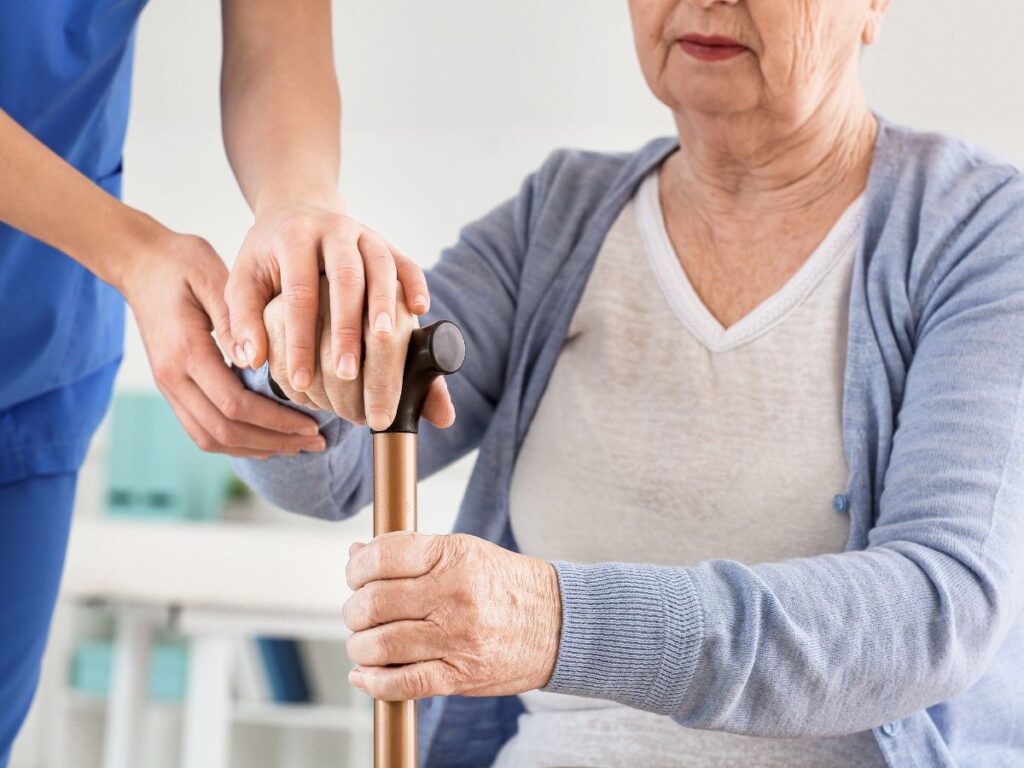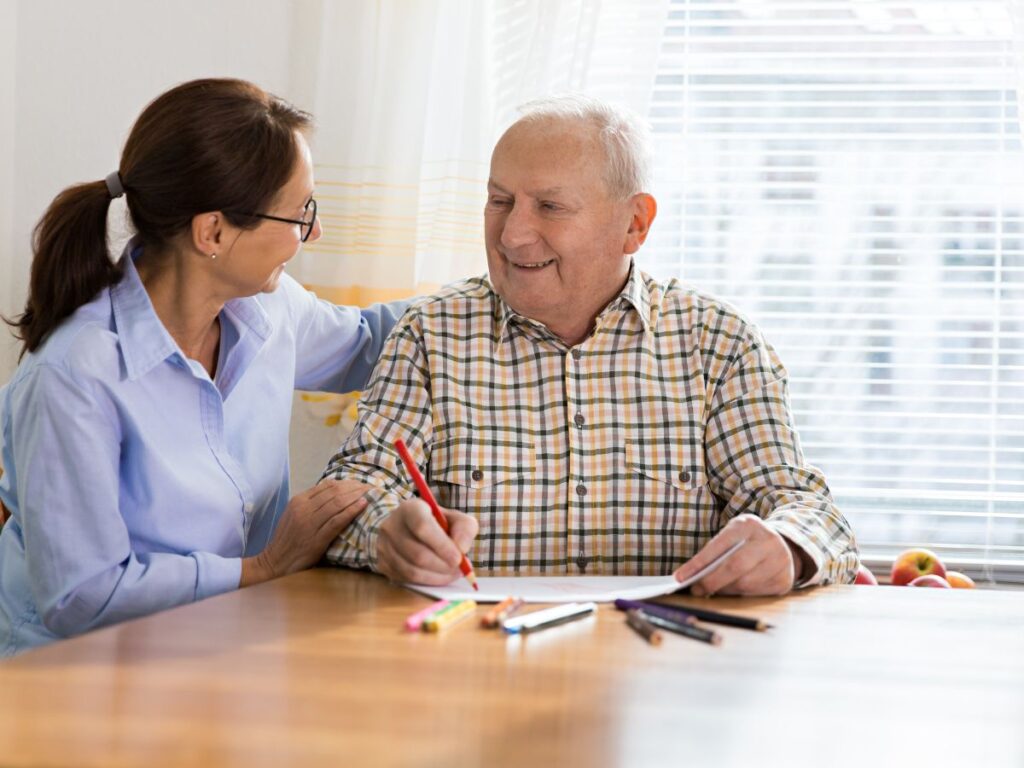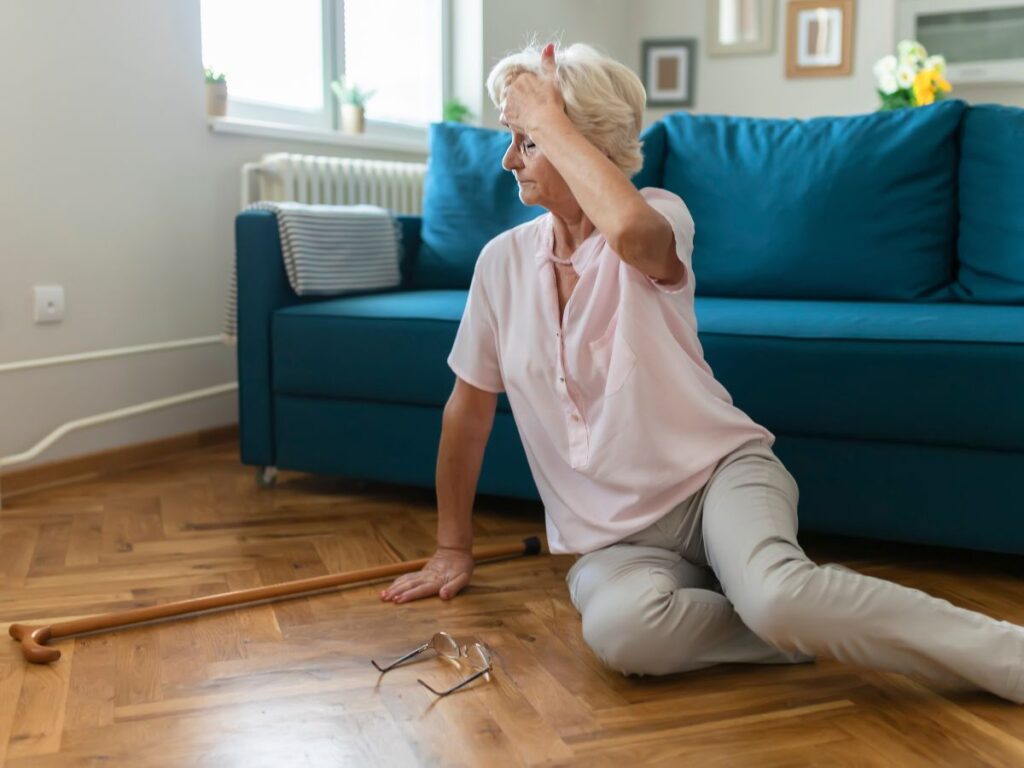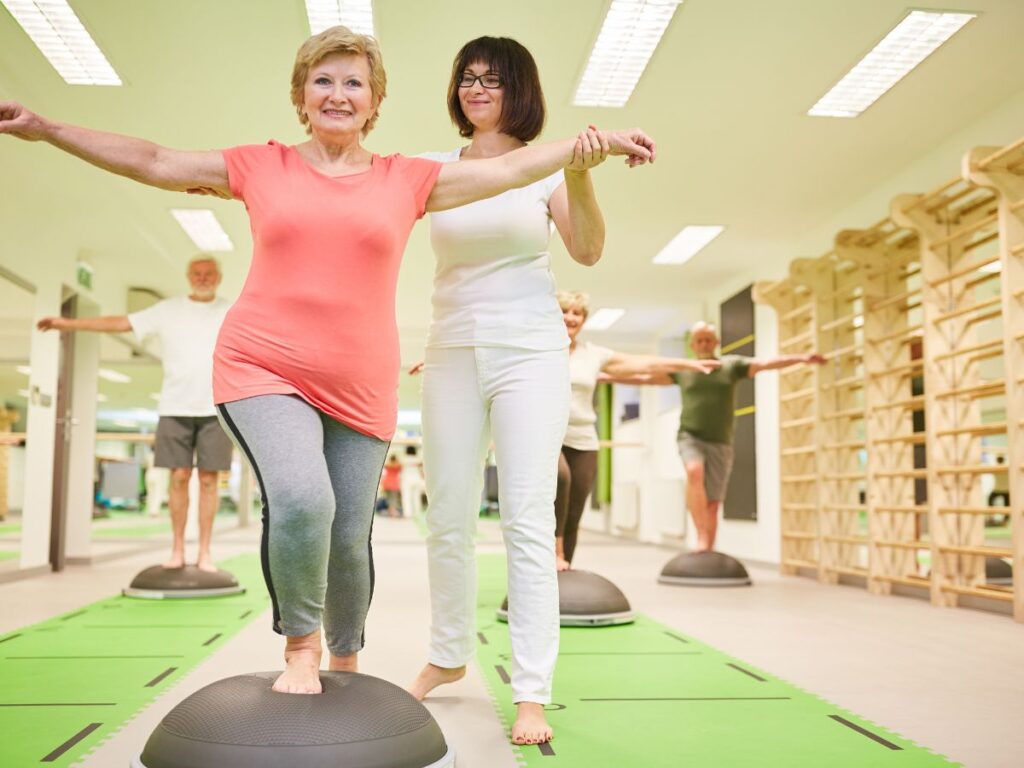Why Fall Prevention Demands a Specialized Approach for Older Adults
In advanced age, muscle strength, reflex speed, and joint flexibility can diminish, making everyday tasks riskier. Falls often lead to fractures or lengthy recoveries that sap independence. Fall prevention programs for elderly adults tackle these vulnerabilities head-on: training balance, enhancing leg power, and pinpointing hazards within the home. By weaving posture improvements and Dr. Elham’s spinal alignment checks into these programs, seniors refine a stable stance that reduces the chance of slips on tiles or missteps down stairs. This comprehensive strategy moves beyond cautionary advice, actively fostering confident movement so older adults feel secure stepping outside, greeting visitors, or performing minor errands. A robust fall prevention plan thus preserves dignity and self-reliance well into one’s golden years.
The Underlying Causes of Falls
Weakened hips or ankles, joint pain from arthritis, and nerve sensitivities in the feet can all undermine balanced walking. Visual impairments or medication side effects may blur reflexes, compounding risk. Furthermore, an older adult’s environment—like slippery floors or ill-placed furniture—magnifies the danger. Fall prevention programs dig into these details, building muscle strength through gradual exercise, offering strategies for safe stepping, and rearranging home layouts to remove potential hazards. Dr. Elham’s alignment ensures the pelvis and spine aren’t covertly tilting posture. Through consistent practice, seniors solidify a stance that no longer buckles from sudden movements, keeping them safe as they go about chores or short outings.
Key Elements of a Fall Prevention Program
Though each plan adapts to the individual, typical components include:
- Balance and Coordination Drills: Walking heel-to-toe, single-leg stands, or foam pad exercises that sharpen steadiness.
- Strengthening Moves: Resistance band routines targeting critical leg muscles—like quads, hamstrings, and glutes—for support.
- Environmental Safety Checks: Evaluating rooms for loose rugs, dim lighting, or tricky steps and recommending home modifications.
- Posture and Gait Training: Coaching on stride length, foot alignment, and upright torso to reduce stumbling episodes.
- Spinal Alignment by Dr. Elham: Gentle corrections if subluxations strain certain joints, interfering with balanced weight distribution.
Together, these measures equip seniors with the physical capacity and practical knowledge to avoid tumbles, preserving an active routine that doesn’t revolve around fear of falling.
Dr. Elham’s Alignment in the Equation
Steady posture is vital for safe walking, yet subtle misalignments in the neck or lower spine can tilt a senior’s center of gravity off-center, upping fall risks. Dr. Elham inspects the spine’s curves, making small chiropractic adjustments that restore symmetrical leg load. If pelvic subluxations remain, even strong thigh muscles might fail to catch a sudden sway. By removing these hidden posture faults, seniors can anchor the new balance skills gleaned from therapy sessions. The result? A posture that unites stable joints and upright bearing, drastically reducing stumbles. Over weeks, seniors note fewer near-misses and a calmer stance that effortlessly navigates everyday life’s surprises—like a pet crossing their path or an uneven sidewalk edge.
Why Start a Program Early
Many wait until after a scary fall or hospital trip to take fall prevention seriously. But mild unsteadiness can quickly spiral into bigger incidents if left unchecked. Seniors noticing small wobbles—like sudden flailing for support while stepping—benefit immensely from early training. Dr. Elham’s periodic checks reinforce that no degenerative change in the spine compounds those initial wobbles. By tackling these issues before they become dire, older adults stay more agile, less anxious about slipping, and enjoy greater confidence in everyday tasks—like stepping onto a porch or walking through crowded social gatherings—shielded from the burdensome constraints that fear of falling imposes.
Maintaining Gains Off the Mat
Therapists often send seniors home with simple micro-exercises—like standing calf raises at the kitchen counter, or gentle half squats holding onto a chair. Checking posture while reading or TV-watching ensures the spine doesn’t slump, preserving Dr. Elham’s alignment efforts. If older adults notice mild knee or hip fatigue, brief rest or icing can reset. Slowly, these little routines seep into daily motions, reinforcing muscle memory so each step feels natural and secure. Freed from second-guessing every shift in stance, seniors reclaim autonomy, whether tidying a room or heading outdoors for fresh air, all while feeling the steady foundation beneath their feet.
Real-World Barriers Addressed
Fall prevention programs tackle practical scenarios—like pivoting in a narrow hallway, carrying light groceries across the kitchen, or stepping in and out of a bathtub. Therapists demonstrate safe foot placements and balanced posture, verifying seniors don’t overreach or tilt their core excessively. Dr. Elham’s alignment ensures no spinal tilt complicates these tasks. After repeated practice, older adults realize daily chores—like vacuuming or fetching mail—cease to trigger dread. This revived sense of ease often reignites social life, enabling them to attend community events or visit family without the overshadowing worry of stumbling in public spaces.
Risks of Dismissing Fall Prevention
By skipping structured programs, older adults face heightened fall frequency, which can result in fractures, prolonged bed rest, or permanent mobility decline. Fear of further injuries can isolate them at home, limiting activity to minimal housekeeping. In extreme cases, repeated falls spur a move to assisted living, relinquishing the comfort of one’s home. Conversely, consistent training fosters strong legs, sharper reflexes, and stable posture, drastically cutting fall rates. Dr. Elham’s checks intercept degenerative spinal changes that ramp up imbalance over time. Essentially, ignoring fall prevention swaps independence for recurring accidents and a shrinking lifestyle, while early adoption protects safety and fosters an active seniorhood.
Typical Session Outline
Therapists generally evaluate current balance—observing stance or simple walk tests. Gentle warmups, like seated ankle rolls, get blood flowing. Dr. Elham might adjust the sacrum or lumbar spine if subluxations hamper symmetrical stepping. Next, seniors practice incremental balance tasks—like standing on a cushion or walking heel-to-toe. Strengthening moves with resistance bands target core or hip muscles crucial for stability. Any home hazard concerns are discussed, with suggestions for rearranging furniture or improving lighting. Over multiple sessions, tasks become more challenging—stepping over low hurdles or turning with minimal wobble. By graduation, older adults typically experience a confident gait that handles daily demands—like pivoting quickly to greet a visitor—without lurching or panic.
Retaining Control Over Daily Life
Fall prevention programs for elderly adults liberate them from the specter of constant tumbles, bridging physical drills with Dr. Elham’s alignment corrections for total body stability. Over consistent sessions, seniors refine balance, quell stumbles, and adapt their homes for safety. Freed from obsessive caution, they reengage with the joys of family gatherings or short neighborhood walks. This renewed self-assurance not only expands social horizons but also safeguards long-term health, preventing fractures that would otherwise hinder independence. Ultimately, robust fall prevention fosters a future where aging aligns with capability, letting older adults age gracefully and confidently on their own terms.






